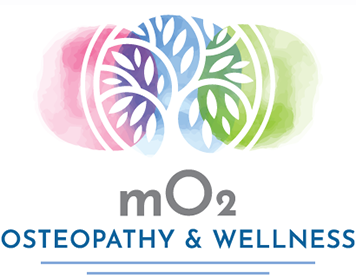FAQs
How can an osteopathic manual practitioner help me?
Osteopathy is for persons of all ages with a variety of health issues relating to:
Pain management - acute & chronic
Musculoskeletal aches or pains
Women pre/post birth support and pelvic health
Sports injuries
Postural issues
Post surgical recovery
Weight bearing issues
Headaches and migraines
Cardiorespiratory concerns
Pediatric conditions
Digestive dysfunctions
Sleep or energy issues
What can I expect from your Osteopathic Treatment(s)?
As a patient-centred therapy, we get to know you by:
The health history that you complete on your first visit
A clinical assessment of your posture, your move patterns and other tests as required.
A review and discussion of the findings from the assessment and a proposed treatment plan in line with your health goals.
Osteopathic treatment is a gentle, non-invasive, individualized hands-on treatment that uses a variety of techniques applied in line with osteopathic philosophy. These techniques emphasize the return of balance of the neurological, musculoskeletal and visceral structures of the body and may include:Myofascial work - General oscillatory treatment, strain-counterstrain, muscle energy, reciprocal membranous tension
Craniosacral therapy
Visceral therapy
Lymphatic therapy
Patient education and recommendations for home exercises, stress management or other pertinent information to assist in your recovery and well-being
What should I bring or wear to my Treatment?
Wear loose, comfortable clothes (i.e.. workout wear), pair of socks
List of medications
Any relevant medical reports
What can I expect for follow up to Treatment?
Any lasting changes require time and effort. The 1-hour treatment will help but how you move, breathe, think, feed yourself and sleep in the other 167 hours of the week will play a big role in the integration of your treatment and in your progress. As osteopathy aims to treat the underlying cause and contributing factors to your symptoms, a handful of visits may be required.
How do I find a qualified practitioner?
Part of therapy involves being comfortable with your therapist’s professional qualifications, skills and judgement. It is fair to ask your potential practitioner about their work experience, education and additional training to get a sense if they are someone that you want to work with.
In Ontario, a registered massage therapist (RMT)* will have received their education in accordance to the standards set out by the governing College of Massage Therapists of Ontario (CMTO) and will have passed provincial examinations. All RMTs are regulated healthcare professionals. You can find a qualified RMT by going to the CMTO’s public register or at the Registered Massage Therapists Association of Ontario (RMTAO).
Osteopathy, as represented by the Canadian Federation of Osteopaths (CFO) is actively in the process of establishing osteopathy as a regulated healthcare profession. A qualified osteopath manual practitioner* will have successfully completed a program from an osteopathic institute that meets or exceeds the Benchmark for Training in Osteopathy, published by the World Health Organization. In Ontario, members of the Ontario Association of Osteopathic Manual Practitioners (OAO) and members of the CFO will have this extensive education and clinical training. You can find a qualified Osteopathic Manual Practitioner (OMP) in Ontario by visiting the OAO website or within Canada by visiting the CFO.
Please note that the word “osteopath” is a restricted word to be used only by members of the College of Physicians and Surgeons of Ontario. Most forms of osteopathic practice in Canada involve manual therapy done by qualified osteopathic manual practitioners (OMP).
Elyse is a member in good standing with the OAO and RMTAO with over 20 years of experience as a manual therapist. She graduated from a 5-year program at the Canadian College of Osteopathy and wrote her research paper on “The Effects of Liver Normalization on Thoraco-lumbar Mobility – A Pilot Study”
*Each RMT will have registration number from the college- CMTO and Osteopathic Manual Practitioner will have membership number from their association. These numbers should be on receipts for services and are verified by insurance companies.
What is the difference between massage therapy & osteopathy?
Take a look at our chart which explains the differences.
Are the costs covered by insurance ?
Osteopathy and massage fees are not covered by OHIP. They may be covered by your private or extended health care plan. Your specific plan may require a referral note from your medical doctor but your manual practitioner does not require one to provide you service. Please note that most insurance companies who provide coverage for osteopathy services recognize only certain professional associations whose members have met the highest standards for education and clinical training.
